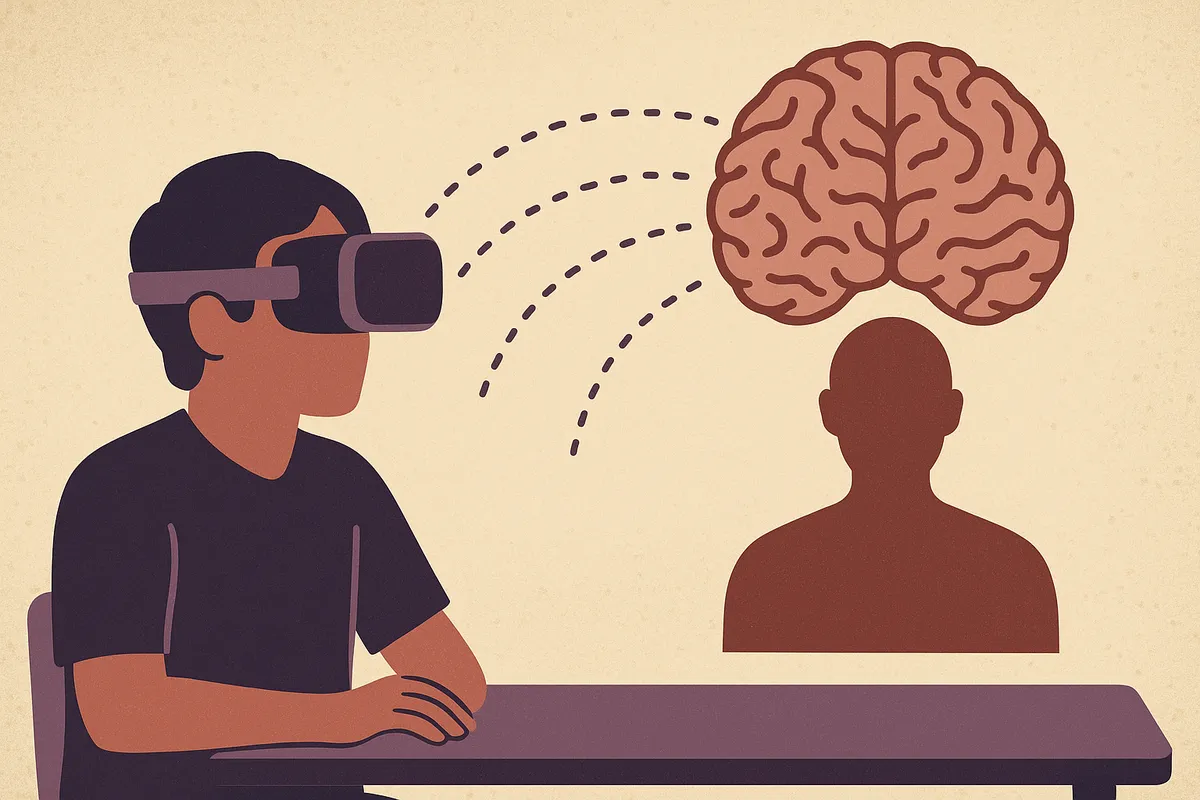Extended Reality for Autistic People or Extended Reach of Deficit Logic?
 Meta-Analysis, Meta-Message
Meta-Analysis, Meta-Message
A new systematic review in European Child & Adolescent Psychiatry by Yang-Hsiu Sun, Sung-Hui Tseng, Wen-Hsuan Hou, Hung-Chou Chen, Che-Wei Lin, and Yuan-Hung Wang — all affiliated with Taipei Medical University Hospital, Shuang Ho Hospital, or Tungs’ Taichung Metroharbor Hospital — hails extended reality (XR) technologies as an “effective and promising” intervention for autism.
Thirty-one other studies, both randomized and not, were pooled in this study — Impact of extended reality interventions on core deficits and functional performance among individuals with autism spectrum disorder: A systematic review and meta-analysis — to show that VR goggles, projection systems and augmented overlays deliver measurable gains in “social skills,” “behavioral functioning,” “emotion recognition,” “cognitive ability” and “anxiety reduction.” The meta-analysis is thorough, the statistics heavy, the PRISMA flowcharts tidy (for readers outside research circles: PRISMA refers to the Preferred Reporting Items for Systematic Reviews and Meta-Analyses, a guideline for transparency in systematic reviews) — a display of rigor that masks how deficit-based assumptions were baked into the outcome coding from the start. But the meta-message is not neutral. When you anchor a field to “core deficits,” you build a future where autistic life is framed as something to be corrected.
Outcomes by Whose Measure?
Buried in the coding scheme are the priorities: autism is defined as impaired reciprocity, problematic behavior, failed emotion reading and lagging cognition. These are not neutral descriptions. They are the deficit scaffolding imported wholesale from DSM and rebranded as outcome domains. The review’s authors do not ask whether autistic participants found XR more accessible than a worksheet, or whether immersive environments reduced sensory exhaustion or whether voluntary participation outweighed compliance. They ask if autistic people looked more typical afterwards.
The Mirage Behind the Metrics
Effect sizes are modest to large, at least on paper. But the promise hangs on shaky ground. Eleven randomized controlled trials (RCTs) and twenty non-RCTs cover 861 participants, often in small, single-site samples. Devices range from tablets to headsets to projection caves. Measures vary wildly. Heterogeneity (that is, inconsistency in study results and methods) runs high, publication bias lurks, and outcomes were sometimes pulled from bar charts with digitizer software. Yet the conclusion is sweeping: XR is effective, feasible and ready for broader adoption. This is how deficit framing extends its reach. A complex picture gets flattened into a marketing line: “technology works.”
Promises for Whom?
The study positions XR as an adjunct to therapy, scalable into schools and clinics. That is music to the ears of ed-tech vendors, hospital procurement boards and insurance reviewers looking for neat effect sizes. Autistic people themselves do not appear as stakeholders. No autistic-led studies are cited. No attention is paid to whether participants wanted the interventions, whether dropouts reflected burnout or whether any joy was recorded. The beneficiaries are not the children wearing the headsets. The beneficiaries are the institutions buying them.
Autonomy on Mute
The loudest silence is autonomy. XR has real potential when used for access: practicing wayfinding before entering a subway, previewing a medical visit, rehearsing sensory-heavy environments without risk. Those applications are barely visible here. Instead, XR is slotted into the deficit machine: practice eye contact, label emotions faster, suppress repetitive movements. This is not a neutral repurposing of technology. It is the reproduction of surveillance, except now the screen is strapped to your face.
Methods, Not Magic
Autistic futures do not hinge on proving that VR raises a social skills scale by half a standard deviation. They hinge on whether tools are built with autistic people, whether outcomes include reduced burnout and whether autonomy is preserved. A systematic review could have coded for consent, preference or self-reported benefit. Instead, it codes for “improved behavior.” According to whom? That methodological choice is the harm. The deficit is not autistic life. The deficit is the research frame itself.
Exit Music, Not Marching Orders
The XR meta-analysis will be cited widely. Policymakers will call it evidence. Practitioners will use it to justify purchase orders. The risk is that autistic people get XR without ever being asked whether they want XR or what they want it to do. Extended reality becomes extended reach for deficit logic. The work ahead is clear: reclaim the frame, redefine the outcomes and insist that any technology marketed as help must first meet the test of respect.